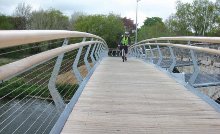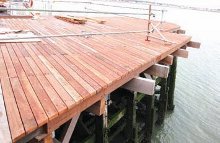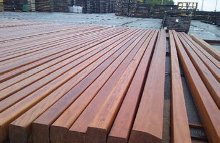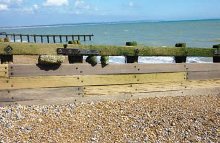Suitable substitutes
12 November 2012The timber trade needs to explore the potential of alternative tropical species, and the WWF has produced a new guide to help, reports James Horne of the environmental organisation’s Global Forest & Trade Network
Anew guide to lesser-known tropical timber species (LKTS) from the WWF is designed to benefit the forest, encourage environmental certification and give the timber industry a wider choice of raw material and improved availability.
The exploitation of a few commercially valuable timber species, such as mahogany afrormosia, ramin, meranti and rosewood, has meant that many are now increasingly scarce, or even threatened with extinction.
Even in forests with good levels of forest management there is a risk of a shift in species composition in natural forest stands. And the scarcity of certain trees can also dissuade forest managers from obtaining certification for their concessions, as many of these high-value species are rarely available in sufficient quantity to allow for a sustainable harvest.
So, in order to make responsible forest management sustainable long term, markets must be developed for LKTS. Many forest concessions in the tropics can contain hundreds of different trees, yet only a handful are harvested commercially because currently there is no demand, regionally, or internationally. Many of these species' characteristics are not even known but, with further research, they could be proven to perform just as well as many traditionally harvested species.
Take Brazilian rosewood, as an example. This is one of the most highly prized woods in the world and, because of heavy exploitation, it has been listed on CITES Appendix I since 1992, and is now illegal to trade. However, in the Amazon basin there is a species named morado, also known as Bolivian rosewood. This lesser-known species has now been suggested by many guitar manufacturers to provide a suitable alternative for the Brazilian variety. It is also available FSC certified from many producer participants in the Global Forest & Trade Network (GFTN) Bolivia.
The benefits of using and promoting LKTS include the fact that not only can they be used as a substitute for more traditionally-used species in terms of performance and aesthetics in most applications, they are also generally more cost-effective because they are more abundant and underused.
Many available underused species have rich, truly beautiful colours and textures, which can provide new design opportunities for many industry sectors.
If harvested responsibly from a certified forest, LKTS can also alleviate pressure on scarcer trees and increase the economic viability of responsible forest management.
Markets are hard to change as buyers from consumer countries often aren't willing to switch from purchasing the traditionally-used timber, which they know does the job for the products they are used in, and for which there is already a healthy market. To develop demand for LKTS, buyers in consumer countries need to be educated about their strengths and advantages.
It's to this end that WWF has produced its guide. Developed with input from a range of organisations, including TRADA, the Environment Agency, and the Wood Explorer online encyclopedia, it will be published as a free interactive PDF, downloadable from the GFTN site http://gftn.panda.org/newsroom/ from early 2013.
The guide lists the key mechanical and physical properties and potential suitability of 75 timber species from Central and West Africa, Central and Latin America, and South-east Asia. These have been classified as "straight swaps" for more traditionally sourced timber, and you can search for suitable substitutes by selecting from the traditional species listed in the first column of the guide.
The second group is classified as "possible alternatives". Here you can search for LKTS suitable for a specific application or end use by selecting a product group, such as flooring, veneer and garden furniture, again found in the first column of the guide.
For both of the above groups, linkage has also been made between the LKTS and their availability as FSC certified from GFTN producer participants.



